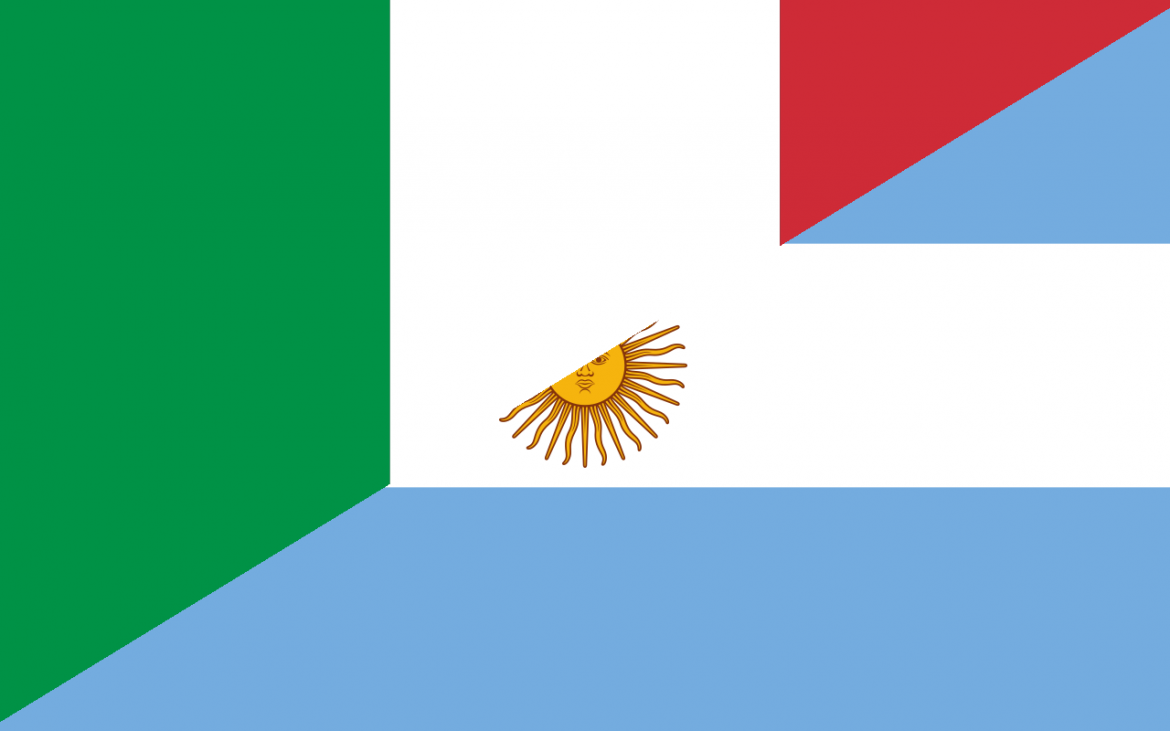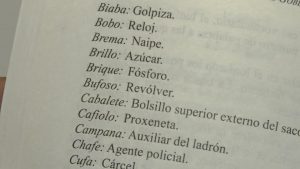There’s no other South American country that is quite so… Italian. Clorrie Yeomans explores the Italian connection in Argentina, and discovers how Italian culture has influenced the language, cuisine and customs of Argentina.
If you have been to Argentina, then you might have wondered, ‘Why do Argentineans eat so much pizza and pasta?’ Or ‘Why are there so many Argentinean words which don’t exist in standard Spanish?’ Argentina is commonly considered to be the most European country in Latin America, due to mass immigration during the late 19th and 20th century. However, there is a common preconception that Argentinean culture is primarily influenced by Spanish culture. In reality, if you visit Argentina, then you will notice that there is a huge Italian influence which has enriched their national identity.
Italian culture at the heart of Argentinidad
These Italian immigrants integrated into the heart of Argentinean society. In fact, in Buenos Aires, there is no Little Italy like in New York. Italian culture is omnipresent in the arts, gastronomy and language. It is estimated that 60% of Argentineans today have some Italian blood. Without a doubt, Argentineans are overtly proud of their Italian roots and continue to keep the spirits of their European ancestors alive. Even those who are not of Italian origin enjoy eating typical Italian dishes and have a broad knowledge of Italian history. I would say that this sums up the beauty and uniqueness of Argentina: a melting pot of cultures which have conserved their customs whilst also adopting a shared Argentinidad.
Why is Argentinean Spanish so different?
It is true that Argentinean Spanish is very distinctive and has a ton of words which do not exist in standard Spanish from Spain or other Latin American countries. Argentineans speak as though they are singing (like Italians) but it can be a bit of a challenge for learners of Spanish or Spanish speakers themselves to understand them!
So, why are so many words different in Argentinean Spanish? You will be surprised by the number of words of Italian origin that Argentineans use in everyday conversation. In fact, the first Italianisms started to appear in the Spanish language between 1400 and 1500, during the Italian Renaissance. Dante’s language mainly influenced art, music, theatre, gastronomy and navigation.
However, Argentinean Spanish is characterised by extensive linguistic borrowing from Italian. It all began when Argentina received several huge waves of European immigration, of which the two main groups were Italians and Spaniards.
When the immigrants arrived, they mixed their mother tongues in an attempt to communicate with one another, as well as with the locals. This gave birth to Lunfardo, the slang which originates from Buenos Aires.
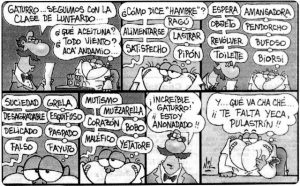
Indeed, Lunfardo is very present in the lyrics of Tango music, which is an iconic symbol of porteño regional identity. According to the Academy of Lunfardo in Buenos Aires, there is a wealth of around 6,000 words and phrases and 70 new ones are invented every year. Indeed, the evolution of Lunfardo is a sign of how the spirits of the 19th and 20th-century Italian immigrants continue to live on in Argentina today.
Common Lunfardo expressions which come from Italian:
Morfar– to eat (comes from the Italian word for mouth: morfa)
Pibe– young man (from the Italian pivetto)
Laburo- work/job (from the Italian lavoro)
Facha- looks (from the Italian facia, or face)
There are also many words related to gastronomy. For example:
Birra– beer (rather than the standard Spanish: cerveza)
Tuco– type of tomato sauce
Che Boludo! Why are you moving your hands about?

Likewise, people often make a ‘c’ sign with their fingers in restaurants to tell the waiter that they would like a cortado (coffee). Furthermore, like Italians, Argentineans love nicknames! It is actually a sign of affection to call their friend “chubby” (gordo) and it is common for people to not know their friends’ real name!
Family always comes first
Much like their Italian cousins, Argentineans come from very closely-knit families where three generations sit around the table every day. There is nothing more important to Argentineans than meeting up with the extended family on a Sunday to savour a delicious asado together.

However, the model of a typical family in Argentina is drastically changing. Middle and upper-class families are having fewer children and women are becoming more present in the political and public sphere. Despite that the nuclear family is changing, family continues to be the most important aspect of life in Argentina.
Italo-Argentine cuisine: a marriage of flavours
When the first Italian communities settled in Argentina, they continued to prepare the typical dishes from their regions. The local Argentine population soon adopted these Italian dishes which became universal family favourites. So much so that by the 1920s, Porteños stopped eating puchero (beef and vegetable stew) for Sunday dinner and opted for pasta dishes instead. This trend even spread to other regions which received fewer Italian immigrants. The rich variety of regional dishes cooked by the immigrants who came from different parts of Italy gave birth to the diverse Argentinean cuisine that we know today.

Asados are saved for special occasions or the weekend when people set aside a whole afternoon or evening to enjoy some quality food and catch up their loved ones.
Typical Italian dishes in Argentina:
Milanesa

The most popular type of milanesa is the napolitana which is covered in tomato sauce, ham and melted mozzarella cheese. However, there are lots of different toppings, such as fried egg, guacamole and barbecue sauce.
Pizza
The classic Argentinean pizza is very different to the typical thin-crust pizzas that you find in Italy. In Argentina, pizzas have a thick, airy dough and a chunky crust with all of the classic pizza toppings.
There is also a special type of Argentinean pizza which originates from Buenos Aires called fuggazzetta which is prepared with two pizza bases with cheese in the middle topped with onions.
Gnocchi night
Why do Argentineans eat gnocchi on the 29th of each month? When families were struggling to make ends, they needed to fill their stomachs with the cheapest food possible and these potato-dumplings served the purpose. According to the tradition, each poor family had to invite a hungry person to eat in their house who was actually a saint in disguise who would reward their generosity by placing a gold coin under his plate.
During the Second World War, it became more and more common to eat gnocchi before payday out of necessity. From then onwards, Gnocchi Night has turned into an important national tradition. Nowadays, the 29th is a night in which families reflect on the importance of generosity. It is even believed that those who donate the money left under their plates to charity will be rewarded with deep pockets.
Best places to eat Italian food in Mendoza:
La Marchigiana
La Marchigiana is one of the best-known restaurants in Mendoza. La Marchigiana first opened its doors in the city centre in 1950 as the first bonafide Italian restaurant in Mendoza. This family-run restaurant was founded by María Teresa Corradini, more commonly known as Teresa Barbera, who has become one of Mendoza’s best-loved chefs today. Teresa left post-war Italy at aged 13 with her family in search for a better life in the promised land of Argentina. The family first set up a B&B in Mendoza where her mother taught her how to cook for the guests.

La Marchigiana, Patricias Mendocinas 1550, Mendoza. Tel. +54 (0) 261 423-0751
La Marchigiana branch in Palmares: Palmares Open Mall, Tomás Godoy Cruz 2650, Godoy Cruz. Tel. +54 (0) 261 439-1961
Francisco Barbera (an upmarket restaurant also owned and run by Teresa), Chile 1268. Tel +54 (0) 261 425-3912
Ferruccio Soppelsa ice cream parlour
You will find gelaterias on just about every corner of every street in Mendoza. However, Ferruccio Soppelsa stays true to its Italian roots. Güerino Soppelsa came from Italy to Mendoza in 1927, where he set up his first ice cream parlour and ice cream stand. Soon, Güerino’s family came over from Italy to help him to expand the family enterprise. They opened another ice cream parlour and started to deliver ice creams on their iconic tricycles. The business was then awarded the ‘Cavalieri del Lavaro’ prize from the Italian government which recognises successful enterprises outside of the peninsular.
Ferruccio Soppelsa continues to invent new innovative flavours. I have to recommend their mouthwatering Malbec sorbet which pretty much encompasses the fusion of Italian and Argentinean gastronomy and culture in Mendoza.
Av. Emilio Civit 2, Espejo 299, Av. San Martin Sur 450, Av. General Las Heras 199
La Cuyanita pasta shop
La Cuyanita is a pasta factory and shop which was founded by an Italian couple from Piedmont who originally lived in Cordoba, before moving to Mendoza to set up their pasta shop. Now, the grandmother still lives above the pasta shop and factory, whilst the third generation takes care of the day-to-day running of the business.
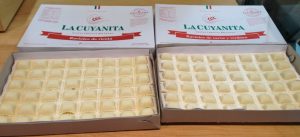
This family business has continued to expand and they will soon open an on-site restaurant selling authentic Italian food; just like mamma used to make!
Italian architecture in Mendoza
Plaza Italia
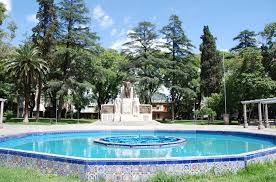
There is an emblematic sculpture created by Giorgio Igne in 1996 of a woman placing her hand on a wheel decorated with the different emblems of the regions of Italy. With her other hand, she is riding a horse which represents the history of Italian culture in Mendoza and the path to the future of Argentina.
Every year just before the Vendimia, the Festa in Piazza takes place in the Plaza Italia. Locals decorate the plaza as a way of keeping the memory of their Italian ancestors alive. There are many stalls selling typical Italian delicacies, as well as street entertainment and music. This is the perfect occasion for locals and tourists to celebrate the Italian influence at the heart of Mendocinian identity.
Italian cultural organisations in Mendoza
Associazione Veneta Mendoza-Giovana
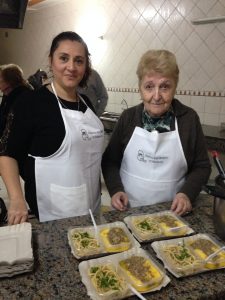
I was recently invited to attend a Spritz Evening organised by the Associazione Veneta Mendoza-Giovana and I felt like I was in Italy! Three generations sat down around the table enjoying a wholesome meal of polenta, homemade pasta and ragu prepared by a team of cooks under the watchful eye of the nonna!
The young performers singing in Italian on the stage were a sign that Italian culture will have an enduring influence in Mendoza.
Dante Alighieri Institute Mendoza
The Italian influence in Argentina is so strong that the Dante Alighieri Institute has decided to host its first international congress this year in Buenos Aires, rather than in Italy! The Dante Institute in Mendoza regularly organises events in order to preserve the Italian culture and language in the local community. For example, each month, they organise an Italian cinema event in collaboration with Mendoza City Council. In October, the Institute celebrates Italian Gastronomy Week and Italian Language Week and in November, students can participate in a theatre workshop and show.
From Italian immigrants to Argentinean migrants
The Vice President of the Dante Alighieri Institute in Mendoza, Carla Ventimiglia, explains that recently there has been a considerable increase in the number of students enrolling for Italian courses. Due to the current economic crisis in Argentina, many citizens are hoping to study or work in Italy. It is fairly simple to obtain an Italian passport by blood as it only requires a few papers. However, in order to obtain a passport by marriage, you must pass an intermediate-level Italian exam.
Many students feel drawn towards learning Italian as a way of discovering their own identity. During the classes, they remember certain words that their grandparents used to say in the kitchen either in standard Italian or a regional dialect.
History is definitely going back on itself and who knows if Argentinean culture will end up influencing Italian national identity in several years to come. What is certain is that the close ties between these two countries, who may not share any borders or even speak the same language, remain as unbreakable as ever.
